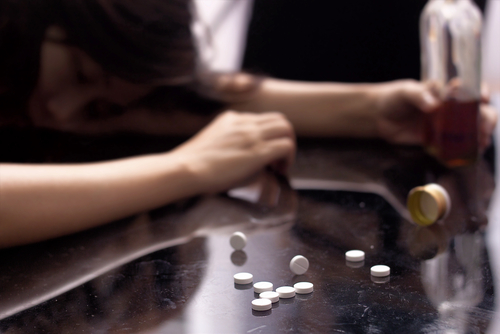Purple heroin is a dangerous and highly potent drug that has emerged as a significant threat to public health. Its distinct color is usually the result of additives or dyes mixed with heroin, and it often contains synthetic opioids such as fentanyl, making it far more lethal than heroin alone. The combination of these substances has raised significant concerns among healthcare professionals, addiction treatment centers, and law enforcement agencies due to the heightened risk of overdose and death.
According to the Drug Enforcement Administration (DEA), overdose deaths involving opioids have risen by 38.1 percent in recent years, further underscoring the threat posed by drugs like purple heroin. The potency of synthetic opioids mixed with heroin drastically increases the likelihood of accidental overdose, as users may be unaware of the strength of the substances they are consuming.
For individuals, families, and communities dealing with substance abuse, it is essential to understand the risks associated with purple heroin, its devastating effects on the body, and the treatment options available. Recognizing the severity of this drug and seeking appropriate help, such as enrolling in a heroin addiction treatment program, can be life-saving. Comprehensive treatment plans can offer medical detox, therapy, and long-term support to help individuals recover from addiction and avoid the deadly consequences of continued drug use.
What is Purple Heroin?
Purple heroin is a street name for a dangerous combination of heroin and powerful synthetic opioids, most commonly fentanyl or its analogs. The purple color typically comes from the addition of various cutting agents or dyes, which dealers mix into the heroin. These additives can range from harmless substances to toxic chemicals, further increasing the unpredictability and risk associated with using this drug. This unpredictability means users are often unaware of the exact substances they’re ingesting, leading to a much higher potential for overdose. For individuals struggling with addiction, seeking professional help through an opioid addiction treatment program is crucial to safely detox and recover from the life-threatening effects of purple heroin.
Heroin by itself is already a highly addictive and lethal opioid, but the inclusion of fentanyl makes purple heroin far more dangerous. Fentanyl is 50 to 100 times more potent than heroin or morphine, meaning that even a tiny amount can be fatal. Just two milligrams of fentanyl — about the size of a few grains of salt — is enough to cause a lethal overdose. This extreme potency, coupled with the fact that many users are unaware they’re consuming fentanyl, significantly increases the risk of accidental overdose and death when using purple heroin.
The Dangers of Purple Heroin
The dangers associated with purple heroin stem from both its ingredients and its unpredictability. Fentanyl is often added without the user’s knowledge, and because fentanyl is so potent, users often don’t realize how much they are consuming. A dose as small as 2 milligrams of fentanyl can be fatal, especially when mixed with heroin.
One of the primary dangers of purple heroin is the increased risk of overdose. Heroin and fentanyl suppress the respiratory system, making it difficult for the body to breathe. This can lead to respiratory failure, which is often fatal unless immediate medical intervention is provided. Additionally, the combination of heroin and fentanyl makes it harder to reverse an overdose using naloxone, a medication commonly used to counteract the effects of opioid overdoses.
Another danger lies in the addictive nature of both heroin and fentanyl. Even individuals who have used heroin before may find themselves more quickly addicted to purple heroin due to the presence of fentanyl. The withdrawal symptoms from such potent drugs can be extreme, leading individuals to seek out the drug repeatedly despite the risks.
Effects of Purple Heroin on the Body
Purple heroin’s effects on the body are similar to those of regular heroin but are often intensified due to the presence of synthetic opioids like fentanyl. After use, individuals experience an intense euphoria, followed by drowsiness, slowed breathing, and impaired mental function. Some users report a feeling of warmth or heaviness in their limbs.
However, these initial effects are quickly replaced by harmful consequences. Regular use of purple heroin can result in long-term damage to various organs, including the brain, liver, and kidneys. Prolonged heroin use is known to compromise the immune system, increasing the risk of infections. According to the National Institute on Drug Abuse (NIDA), heroin use is also associated with a higher risk of contracting diseases such as HIV and hepatitis C, primarily due to shared needle use.
Additionally, the respiratory depression caused by purple heroin can lead to oxygen deprivation in the brain, resulting in permanent brain damage or death. Individuals may also experience nausea, vomiting, and extreme itching, leading to open sores on the skin from excessive scratching.
The intensity and potency of purple heroin also accelerate the onset of withdrawal symptoms. These symptoms can begin as early as a few hours after the last use and include nausea, vomiting, sweating, muscle aches, and intense cravings. Without proper treatment, withdrawal from purple heroin can feel unbearable, pushing individuals back into a cycle of use to avoid the pain.
Signs of Purple Heroin Use
Identifying the signs of purple heroin use can be challenging, but some key indicators may help individuals recognize when a loved one is struggling with substance abuse.
Common physical signs include:
- Pinpoint pupils
- Slowed or shallow breathing
- Drowsiness or nodding off
- Slurred speech
- Track marks from injection
Behavioral changes, such as increased secrecy, neglect of personal hygiene, and withdrawal from social or professional responsibilities, are also common.
If you suspect someone is using purple heroin, seeking help immediately is crucial to prevent further harm or overdose.
Treatment Options for Purple Heroin Addiction
Detoxification is the first step in treating purple heroin addiction. Due to the potency of the drug and the severe withdrawal symptoms, medically supervised detox is highly recommended. Detox programs, like those offered at Pathways Recovery Center, provide a safe environment where individuals can cleanse their bodies of the drug under the care of healthcare professionals. Medications may be administered to help ease withdrawal symptoms and prevent relapse.
During detox, individuals may experience various symptoms such as nausea, sweating, shaking, and severe cravings. While the process is challenging, the support of a medical team can make the difference between relapse and recovery. Detox alone is not a cure, but it is a critical first step in overcoming addiction.
Residential treatment is often the next phase of recovery after detox. At Pathways Recovery Center, individuals struggling with purple heroin addiction can receive 24/7 support in a structured, drug-free environment. Residential programs include therapy, counseling, and support groups that address the root causes of addiction while helping individuals develop healthier coping mechanisms.
Cognitive Behavioral Therapy (CBT) is one of the most effective forms of therapy used in treating heroin addiction. CBT helps individuals identify and change the thoughts and behaviors that contribute to their drug use. Through therapy, individuals can learn how to manage stress, resist cravings, and rebuild relationships that may have been damaged by addiction.
Medication-assisted treatment (MAT) is also a critical component of treating purple heroin addiction. Medications such as buprenorphine, methadone, and naltrexone can help reduce cravings and withdrawal symptoms, making it easier for individuals to stay in recovery. MAT is often used in conjunction with counseling and therapy to provide a comprehensive treatment approach.
Overcoming Heroin Withdrawal
One of the most challenging aspects of overcoming purple heroin addiction is dealing with withdrawal. Heroin withdrawal symptoms can be severe and include nausea, vomiting, muscle aches, sweating, and intense cravings. The withdrawal process can begin within hours of the last dose, and symptoms typically peak within 24 to 48 hours.
While the intensity of withdrawal can vary, it is often overwhelming without medical support. At Pathways Recovery Center, individuals can receive medical supervision during the detox process to manage their symptoms effectively and reduce the risk of relapse.
There is often confusion about heroin’s classification as a drug. Is heroin a stimulant? The answer is no. Heroin is classified as a depressant because it slows down the central nervous system, resulting in slowed breathing and heart rate. This can lead to dangerous consequences, including respiratory failure, especially when heroin is mixed with other substances like fentanyl.
Heroin can vary in appearance depending on how it is processed and what substances are used to cut it. What does heroin look like? It can range from a white or brown powder to a sticky black substance known as black tar heroin. Purple heroin, with its distinct color, is often identified by its purple hue, which comes from various additives and cutting agents.
Seeking Help at Pathways Recovery Center
If you or someone you love is struggling with purple heroin addiction, seeking professional help is crucial. At Pathways Recovery Center, we offer comprehensive detox and residential treatment programs designed to address every aspect of addiction. Our team of medical professionals, therapists, and addiction specialists will work with you to create an individualized treatment plan that suits your needs. Recovery is possible, and you don’t have to face it alone. Contact us today to learn more about our treatment programs and take the first step toward a healthier, drug-free life.




